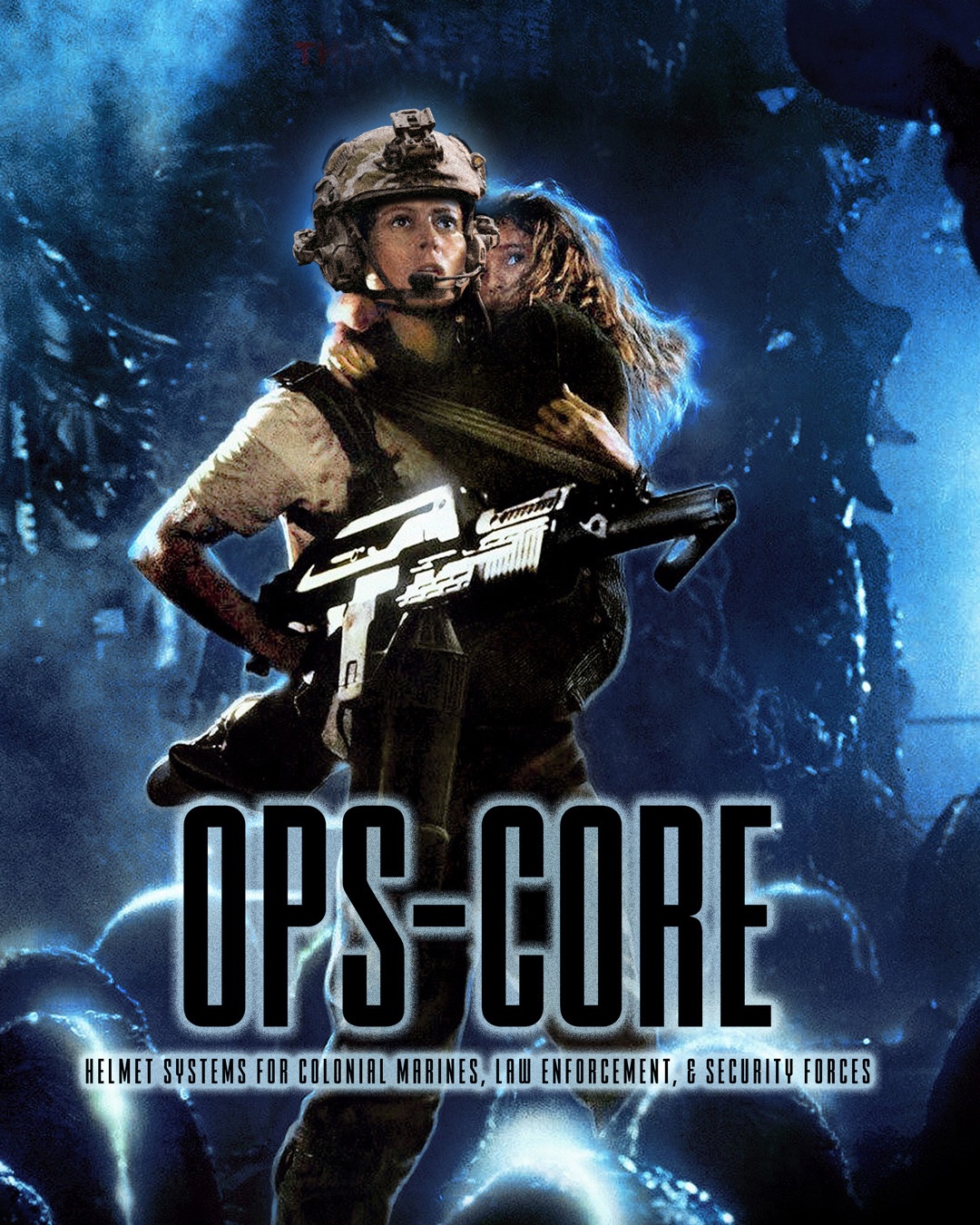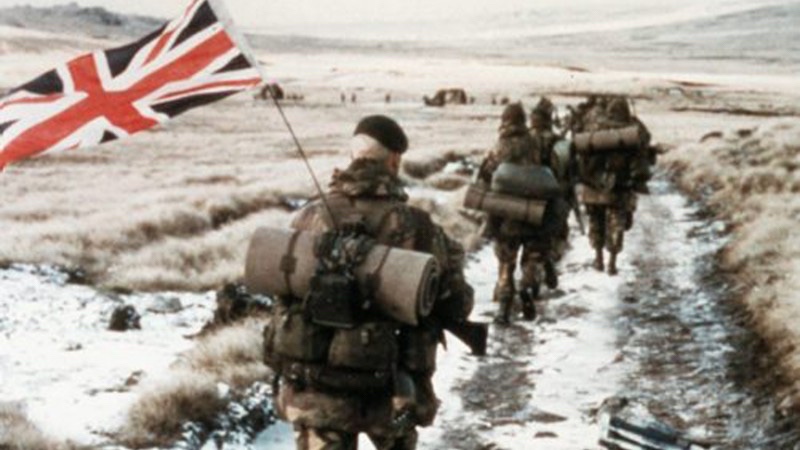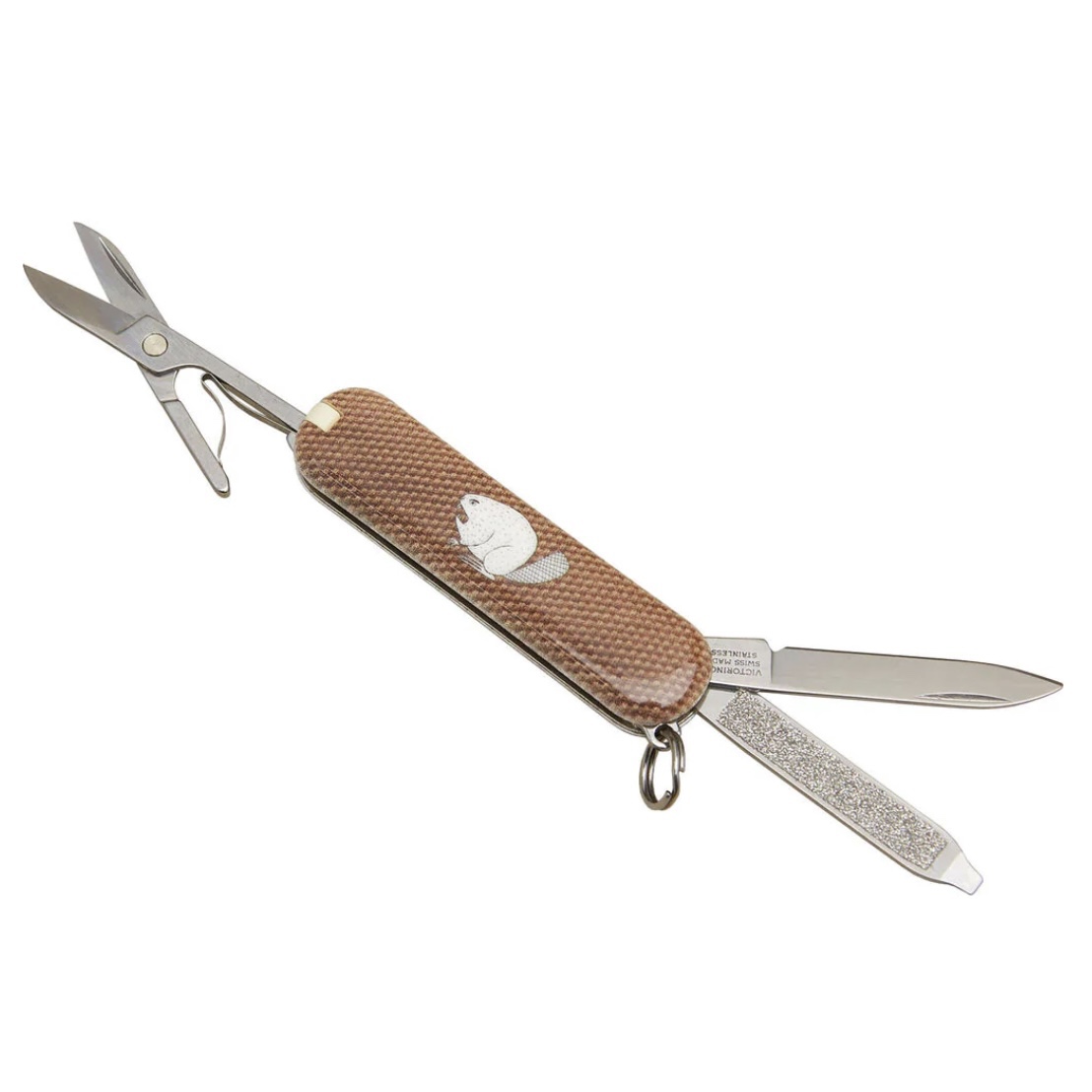
Ripley: The original action girl. Don’t let ’em forget.

Ripley: The original action girl. Don’t let ’em forget.
The Royal Marines are a maritime-focused, amphibious light infantry unit that can deploy on short notice to support the United Kingdom Government’s military and diplomatic objectives worldwide. They are designed for highly maneuverable operational situations. The Corps provides lead element expertise for the NATO Northern Flank and are optimized for high altitude operations as the United Kingdom Armed Forces’ specialists in cold-weather combat.

The Royal Marines were formed to serve as the infantry of the Royal Navy. On 28 October 1664, the first unit of what would become the Royal Marines was formed. The Duke of York and Albany’s Maritime Regiment of Foot was renamed the Admiral’s Regiment after the Duke of York and Albany’s Maritime Regiment of Foot was disbanded. In 1672, the title ‘Marines’ first appeared in records. The Marine Regiments were then disbanded and re-established whenever the United Kingdom’s overseas colonies were threatened. His Majesty’s Marine Forces were established in 1755 and placed under Admiralty authority at Chatham, Plymouth, and Portsmouth. For many years after that, the Marines were connected with these communities. They were given the title Royal Marines by George III in 1802. The Royal Marines engaged in the ill-fated Gallipoli landings during World War One. The Royal Marines fought in several battles on the Western Front. During the conflict, the Royal Marines were awarded five Victoria Crosses.

The Royal Marines fought against the Chinese in the two opium wars, the Crimean War and the Boxer Rebellion in China during the Napoleonic Wars and the War of 1812. The Royal Marines engaged in the ill-fated Gallipoli landings during World War One. The Royal Marines fought in a number of battles on the Western Front. During the conflict, the Royal Marines were awarded five Victoria Crosses. The Royal Marines’ artillery and infantry units were combined in 1923 to become the Corps of Royal Marines. During World War II, the commando role so closely identified with the Royal Marines was developed. The Royal Marines commando groups that had fought in Norway, North Africa, and Dieppe were combined with the Army commandos. In 1943, the Special Service Brigade was formed, and the overall command structure was designated as the Special Service Brigade. During WWII, there were four Special Service Brigades, and the Royal Marines served in each of them. During the conflict, nine Royal Marines Commandos units were formed, ranging from 40 to 48 men.

During WWII, these commando battalions took part in numerous wars, including Italy, D-Day, and Antwerp.

During World War II, the Royal Marines received one Victoria Cross. The Army Commandos were abolished in 1946, leaving the commando function to the Royal Marines. The Royal Marines served in the Korean War, Malaya, Suez in 1956, Northern Ireland, and the Falklands War in 1982 after 1945. Together with the Parachute Regiment, the Royal Marines were regarded as the Task Force’s spearhead in the effort to expel Argentine soldiers from the Falkland Islands. The Royal Marines fought at Mount Kent, Mount Harriet, and Two Sisters before ‘yomping’ into Port Stanley after San Carlos Bay. In the Falklands, the Special Boat Service (SBS) played a major, if more hidden, role, successfully attacking a key Argentinean stronghold at Fanning Head, which overlooked San Carlos Bay. Since the Falklands War, the Royal Marines have served in the Balkans, Sierra Leone, East Timor, Afghanistan, and Iraq.
SCUBAPRO Sunday is a weekly feature focusing on maritime equipment, operations and history.
I was browsing around Duluth Trading Co the other day looking for a birthday gift for Tactical Fanboy and ran across the Victorinox Angry Beaver Knife.

Along with Brown scales, it features a pair of scissors, small blade, file, straight screwdriver, toothpick, tweezers and keyring. In addition to the angry beaver, the other side features the Duluth Trading logo.
I got quite a kick out of it, and while Tactical Fanboy isn’t getting one, someone else on my life is.
www.duluthtrading.com/victorinox-angry-beaver-knife-79294
ARLINGTON, Va. —
The Deputy Commandant for Information established the Information Development Institute, the IDI Portal and available learning and development resources for information technology, cyber and intelligence civilian Marines reflected in MARADMIN 457/21 released on Aug. 31.
Recruiting, developing and training top talent with the right skills needed to fight and win in the information environment is a top priority for DC I.
Since the inception of the program to the beginning of FY22, more than 350 individuals, stationed in the US and aboard, assigned to various units have leveraged resources available to refine their skills and capability in support of the Marine Corps Team.
“As described in the Force Design Annual Update, we need to seek new approaches in training and education that will serve as a force multiplier,” stated Lt. Gen. Matthew Glavy, Deputy Commandant for Information. “Success starts with people. Developing and managing talent is a top priority for the Marine Corps. Information Development Institute is just one way DC I is enabling our civilian workforce to learn the skills needed in support of Force Design.”
The IDI provides a program for continuous development of Marine Corps civilians who deliver information systems, services, and products critical to the Fleet Marine Force. In practice, the IDI provides a centralized one stop shop for training and education opportunities for all Information Civilian Marines at scale.
Within the IDI, information civilian Marines have access to a learning network to include the IDI Pluralsight learning platform, technical training, learning partnerships and learning opportunities.
The newly established learning network is comprised of the IDI Pluralsight learning platform enabling unlimited access to over 10,000 on-demand technology courses and skill-based learning content organized specifically for work roles.
“Information Development Institute is just one way DC I is enabling our civilian workforce to learn the skills needed in support of Force Design.”
Lt. Gen. Matthew Glavy, Deputy Commandant for Information
“The learning platform has provided me with the flexibility to participate in both lecture format training and practical labs without the restrictions of a rigid schedule or location. It is this flexibility, mixed with the short lessons, that let me continue to learn when there are lulls in my daily work,” said Andrew Kosakowski, Information Systems Security Manager assigned to Marine Corps Information Operations Center, DC I. “Overall, I believe this learning platform is a good resource for developing new, refreshing old, and retaining current technical skills I do not use daily.”
Also part of the learning network is Marine Credentialing Opportunities On-Line to supporting credentialing voucher support for IT and cybersecurity civilians.
The IDI learning network is a centralized platform, accessed via the MarineNet eLearning Ecosystem.
Learning experiences and partnerships within the IDI enables industry exchanges and rotational opportunities that encourage cross training. Additionally, the IDI enables collaboration with academic institutions to bring degree-based programs of instruction.
In support of certification and technical training in security, networking, and applications skillsets, IDI has partnered with Naval Information Warfare Center and General Services Administration to provide courses.
“Our IT, cyber and intel civilian Marines are vital to the mission at DC I and enabling the force to operationalize information as a warfighting function,” said Jennifer Edgin, Assistant Deputy Commandant for Information. “We value the diverse skills our civilian force brings to the team and I am proud that we can provide them access to additional training and opportunities to continue to equip them with the skills for the future.”
All IT, Cyber and Intel Civilian Marines who would like to request access to an IDI course or Pluralsight subscription should request via the link: portal.marinenet.usmc.mil/IDI, or email IDI_Team@usmc.mil.
The referenced published MARADMIN: 457/21 can be found at the following link: www.marines.mil/News/Messages/Messages-Display/Article/2759437/announcement-of-the-information-development-institute-idi-learning-resources-fo
By Maj Gregory Carroll, Headquarters Marine Corps
10-26-2021
This statement is made by a collection of leading On-Set Armorers and Weapons Masters working within the motion picture industry. Foremost, we offer our condolences to the family and friends of Cinematographer Halyna Hutchins, who tragically and needlessly lost her life on-set in New Mexico on October 21st. We also wish Director Joel Souza and all affected by this tragedy a speedy recovery. The fatal incident that occurred during filming of the production “Rust” is currently under investigation, and we ask that the media refrain from drawing conclusions before all the facts are known.
While we await the investigation and welcome its conclusions, there are some things we do know about the show “Rust,” how it was run, the poor choices that were made, and the circumstances that led to the death of Ms. Hutchins.
Point 1 – On-Set Armorers and Weapons Masters have an exemplary performance history of safety, professionalism, and accomplishment in the film industry. High profile media attention, celebrity talent, and the demand for realism have pushed the skills of On-Set Armorers and Weapons Masters to the highest levels in any industry, including among stunt performers, explosives and pyrotechnics and other high-risk participants in film production.
The safety of the actors and all crew members is our highest priority.
Industry records establish that there have been a total of three (3) firearm deaths on film sets since 1984. Of those three, two took place outside of California and with non- union or inexperienced crews. The last firearms death that took place on a studio/union film was Jon-Erik Hexum in 1984. From 1993 (the year of the Brandon Lee tragedy) to 2021 there were no firearms fatalities on any set in the United States or Canada. You will not find a related high-risk industry with a better safety record.
As a comparison, we cite film industry statistics. From 1990 until 2021 there were over 117 film industry deaths, with 23 attributed to Construction, 30 in aircraft related accidents, 23 involving Stunts, and at least 41 deaths distributed across the spectrum of Industry Trades. Firearms usage on sets, despite its high profile, represents an incredibly small percentage of on-set fatalities despite being considered a high-risk component of film production. We attribute this exceptional overall safety record to the professionalism and skill level of those On-Set Armorers and Weapons Masters that handle firearms on the vast majority of film productions in the United States and Canada.
Point 2 – The recent authorized strike by IATSE and the tragedy on the set of “Rust” are related and indicative of the same underlying issue. Crews are overworked, under trained, under-supported, and there is an industry wide unwillingness to pay crews in a manner commensurate with their experience and cost of living. Attributed largely to New Media, the number of projects in production has increased exponentially. While at the same time, the formal and informal apprenticeship models that were the heart and soul of our industry have been destroyed by run-away production and related policies and incentives.
Point 3 – Firearms are ubiquitous on film sets and have been since the birth of our industry over 100 years ago. Our job is specifically intended to keep all actors and crew safe while providing the utmost realism and quality in film production. These goals can and do work together under the skilled supervision of On-Set Armorers and Weapons Masters. Millions of blank rounds have been fired on film sets since 1990. The phenomenally low accident rate is a testament to the professionalism of the artisans and craftspeople who have made this industry their calling. Those of us who have taken on this responsibility make it a point of professional pride and honor to strictly follow established, tested, and proven safety procedures. These safety procedures were developed over time by skilled and experienced professionals, many of whom hold licenses and permits unique to the industry. These procedures should never be diminished or marginalized in the name of cost cutting or budget limitations.
If you can’t afford to do it right, if you can’t afford to take care of our crew, then you shouldn’t do it.
Point 4 – The tragic loss of life in this case was likely the result of incompetence and inadequate use of professionals who serve as the gatekeepers to the film industry’s safety protocols and standards. We can state that this tragedy was not caused by a lack of established rules or procedures. As On-Set Armorers and Weapons Masters we see that the incident was completely preventable and should not have occurred, given the longstanding and well-established safety regimen that we work under and implement every day in our industry. The incident was caused, in part, by producers who were unwilling to hire competent people following our long established and tested firearms safety procedures. We are aware of numerous violations of Safety Bulletin Number 1 (see attached) that occurred on this production. Exactly how many violations and which ones will be confirmed by the investigation, but we believe that the evidence will show that this tragedy was a failure of protocol and not due to the need for new or additional regulations.
The vetting of On-Set Armorers and Weapons Masters needs to be a priority.
It is becoming increasingly clear that “Rust” was a film where safety was not prioritized. It has been reported that “Rust” was a poorly run production, and that “corners were cut” in several areas, including critical safety concerns. There have been reports of crew walkouts over numerous crew safety complaints, including: travel time, lack of COVID 19 precautions, payroll issues, and firearms safety.
Point 5 – There is no substitute for the reliability and production value that a real firearm brings to a film or television project under the supervision of a properly trained On-Set Armorer or Weapons Master. In the wake of this tragedy there have been several calls to substitute other options in place of real firearms on set. This quick response is misguided and does not reflect an understanding of the industry, creative expectations, and decades spent refining safe on-screen simulated gunfire. The phenomenal firearms safety record that professional film crews have achieved is the result of consistent education with a relentless focus on safety and responsibility.
A single project’s refusal to recognize established safety protocols compounded by that project’s failure to utilize well trained professionals should not require changing the entire movie industry. Instead, it should put renewed focus on time-tested procedures and the importance of hiring professionals versed in proper on-set firearms safety protocols. For instance: A car accident at an intersection does not require elimination of vehicles, it requires adherence to the rules of the road and education and implementation of those rules among all participants. We call for renewed vigilance and commitment by Film Producers to recognize the importance of a safe work environment.
The tragedy in New Mexico is not an indictment of professional film crews’ ability to safely perform their craft. It is an indictment of the modern production culture, which for the last 30 years has pursued tax credits and found every way imaginable (and several that weren’t) to sacrifice crew health and safety in the name of budget consciousness. This tragedy was an apparent accident; but it was also a predictable outcome of the incentive structure within the modern film industry and how films are budgeted by producers.
Our film culture used to be an ecosystem of mutually supportive companies, studios, and crafts people who worked together to accomplish incredible things. We trained our community to the highest standards, and together we kept each other safe while creating our society’s preeminent art form.
There was a time when we trusted and could depend on each other. Somewhere along the way we lost sight of that. We hope this tragedy marks a turning point for our entire industry; a moment to refocus our collaborative efforts on crew safety by using time- honored procedures and the crews who understand them.
Respectfully,
The Unified Voice of On-Set Armorers and Weapons Masters
www.csatf.org/production-affairs-safety/safety-bulletins
www.csatf.org/wp-content/uploads/2018/05/01FIREARMS
Thank you to Tactical Pro Shop for sharing this with our readers.
MAXWELL AIR FORCE BASE, Ala. (AFNS) —
Airmen now have at their fingertips the opportunity to receive credit for learning about another country’s culture while simultaneously responding to the Air Force chief of staff’s action order to understand the nation’s strategic competitors.
This can be achieved by accessing the latest version of the Air Force Culture and Language Center’s Air Force Culture Guide app.
Howard Ward, AFCLC director, unveiled version 2.0 of the app to a virtual audience Oct. 15, the last day of the 2021 Virtual Air University Language, Regional Expertise and Culture Symposium.
Ward described the updated app as a one-stop shop for accessible, relevant and impactful curriculum in addition to culture field guides.
“It’s a delivery method that can deploy curriculum at enterprise scale, untethered from the constraints of government systems, which is especially great for total force Airmen, and it’s designed to accelerate learning for strategic competition by putting AFCLC’s ‘Global Classroom’ right in your pocket,” he said.
Shortly after its initial release in 2017, The Wall Street Journal recognized the original version as one of the six indispensable apps for business travelers.
The changes to the original app include:
Enhanced accessibility to AFCLC’s Expeditionary Culture Field Guides – Users no longer need to download one of the 69 guides to view their content. Touch the block containing the name of the guide for it to open. Plus, there are seven new ECFGs on the way.
Accelerated learning for strategic competition – Touch the Courses button at the bottom of the screen to view the first new course. Developing Cultural Competence is designed to baseline the user on what culture is, why it matters and how users can learn more as their career progresses. Two more courses will be released soon. These courses will allow each service member to achieve Air Force Chief of Staff Gen. CQ Brown, Jr.’s Action Order C: Competition individually by learning the fundamentals of culture for adversary understanding. Upon completing these courses, users will receive a certificate ready to upload to their learning record, as applicable.
A video library will be coming soon to further enhance learning capabilities on the go.
The app is available through the App Store and Google Play, and it’s safe for Department of Defense mobile devices. More than 20,000 individuals are already utilizing the app, and for those individuals, an automatic update to Version 2.0 is now available.
By Lori M. Quiller, Air Force Culture and Language Center Outreach Team
Witness the system’s real-world capabilities in the Black Hawk helicopter rescue ops training race, legacy hoist vs. the Vita Rescue System video.
“The need for precision control technology to stabilize crane loads and helicopter rescue litter baskets cannot be underestimated,” said Caleb Carr, president, and CEO, Vita. “To help us further limit the swing and oscillation associated with lifting and transporting loads, we needed a bigger EDF. Schübeler Technologies has agreed to customize their EDF’s so that now we have robust fan solutions that fulfill the stabilization needs for both aerospace and industrial load stabilization applications—notably improving safety and maneuverability.”
Rather than simply delivering a product to spec, the partnership is essentially an extension of Schübeler Technologys’ R&D work. As needs arise, systems can be built for Vita to address countless real-world challenges. For instance, a helicopter operating in a desert environment needs an EDF propulsion system that manages huge quantities of dirt and dust, while a rescue mission conducted at sea must have EDFs attached that will need to function after being submerged in saltwater. These products must remain reliable after repeated use in harsh environments, under the most intense operational scenarios. Achieving this high level of sustainability involves significant real-world testing—something Schübeler addresses within its R&D function. The Schübeler Technology and Vita partnership will produce custom-built systems tough enough to perform in any challenging conditions.
“Vita has a very smart and unique approach to load stabilization,” said Daniel Schübeler, founder and chief technology officer of Schübeler Technologies. “We provide the aerospace know-how—at the same time we work on these very special propulsion systems which deliver very efficient and robust thrust, fulfilling a very wide variety of requirements to meet the needs of Vita Inclinata.”
Vita was founded in 2009 by Caleb Carr, a former high school search and rescue volunteer who watched a friend die in the mountains partly due to difficult weather conditions rendering a rescue helicopter’s basket hoist unusable. What resulted was an ongoing quest to find specific solutions to problems of stability and load management in high-pressure environments. Vita has built a team of engineers and field experts that gives them inroads into various sectors—including the military and search and rescue operations. Schübeler Technologies, with its own 25-year history of developing some of the world’s best aerospace and industrial propulsion systems, is a natural fit to help Vita fulfill their mission.
“Our reputation in the field of electric ducted fans brings clients to us,” said Schübeler. “And then we don’t disappoint the people. We deliver.”